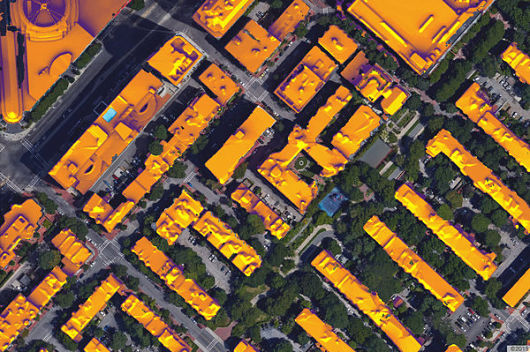Google Unveils Project Sunroof

In 2008, solar panels were considered to be an enviable luxury. Beginning in 2013, the prices thereof began to lower, and this year the cost of solar technology is at a record low and can actually save thousands of dollars per year on electric bills.
There are still a lot of factors to consider where the installation of solar panels are concerned: how much sunlight hits the roof, the local weather, or if there are any businesses nearby where someone could be hired to install them.
Since so many people have asked Google about solar energy, engineer Carl Elkin came up with the initial idea that has since become Project Sunroof. This online tool takes the data from Google Maps and gives all the necessary information including how much money could be saved by installing solar panels.
In the next few months, the project goal is to expand to more cities, more countries and eventually become accessible worldwide. “Elkin writes that Project Sunroof is part of Google’s wider vision of accelerating the wide-scale adaption of zero-carbon energy.”
Solar panels, also called photovoltaic panels, turn energy from the sun into electricity. That energy is then synchronized to become compatible with the power grid in the home. This process actually saves energy that was formerly reliant on carbon energy and replaces it with something that is actually better for the environment.
A popular myth is that solar energy is unreliable, so people will avoid considering the technology until it improves. In actuality, solar panels generally come with a manufacturer’s warranty of 25 years and also requires little to no maintenance during its lifetime. There are few existing electronics to date with 25-year warranties.
So, with all of the existing benefits of solar energy to the environment and to the people who utilize it, the solar subscription service Bright has decided to bring those benefits to developing countries starting with Mexico.
“Working with local partners, Bright provides the software, financing, and maintenance. Using its software, it monitors installations and deploys partners to fix any errors.” These initiatives make energy more affordable and therefore, more accessible and enjoyable.
Project Loon gives the developing world access to the internet, and Project Sunroof combined with the initiatives of services such as Bright gives the necessary energy for not only the maintaining of devices that connect to the internet but also for everyday activities.
So, not only can the developing world be provided with water mills and food, but can even (for example) be helped with alternative methods of storing them and keeping them fresh for longer periods of time.
– Anna Brailow
Sources: Voice of America, IFL Science, RE-volv, Bright
Photo: CS Monitor
